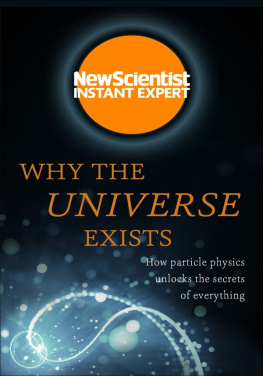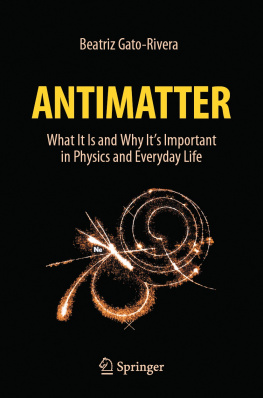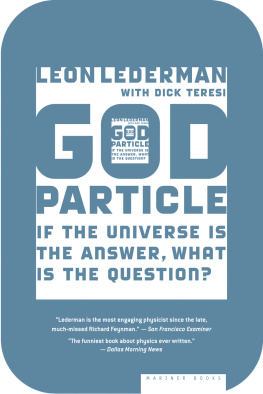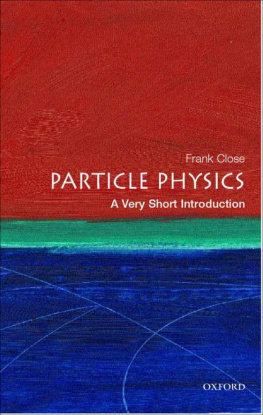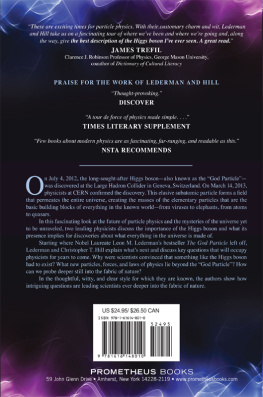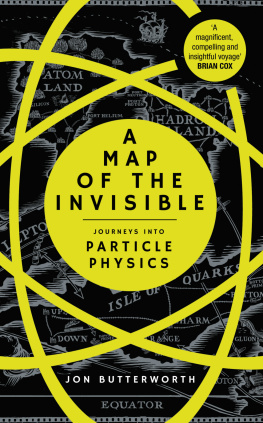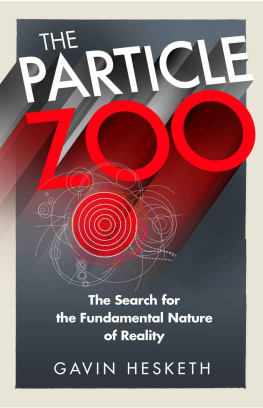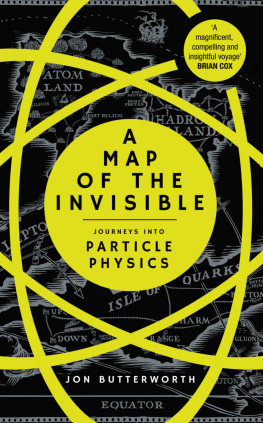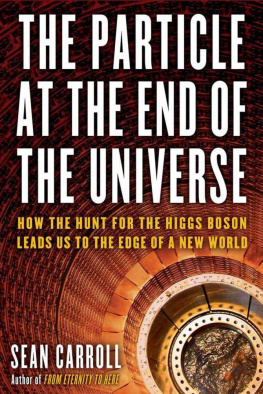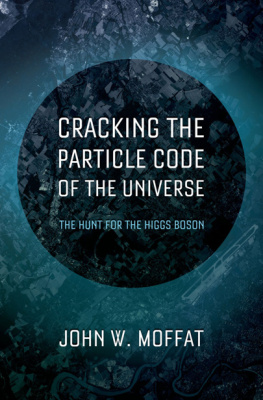Why the Universe Exists
How particle physics unlocks the secrets of everything
NEW SCIENTIST
Contents
Series introduction
New Scientists Instant Expert books shine light on the subjects that we all wish we knew more about: topics that challenge, engage enquiring minds and open up a deeper understanding of the world around us. Instant Expert books are definitive and accessible entry points for curious readers who want to know how things work and why. Look out for the other titles in the series:
The End of Money
How Evolution Explains Everything about Life
How Your Brain Works
Machines That Think
The Quantum World
Where the Universe Came From
Your Conscious Mind
Contributors
Editor: Stephen Battersby is a physics writer and consultant for New Scientist.
Series editor: Alison George is Instant Expert editor for New Scientist.
Articles in this book are based on talks at the 2016 New Scientist masterclass Mysteries of particle physics and articles previously published in New Scientist.
Academic contributors
Jon Butterworth is a professor of physics at University College London, and a member of the ATLAS collaboration at CERNs Large Hadron Collider, who researches the mechanism of electroweak symmetry breaking, which explains why some things have mass. He wrote Why do we need the Higgs? in .
Michael Duff is Emeritus Professor of Theoretical Physics at Imperial College London, and a pioneer of supergravity. He wrote about string sounds in .
Dave Goldberg is a professor of physics at the Drexel University in Philadelphia, Pennsylvania, specializing in theoretical cosmology. He wrote Why symmetry rules the universe in .
Andrew Harrison is CEO of the Diamond Light Source at Harwell, UK, and a visiting professor of chemistry at the University of Manchester. in the UK. He wrote Neutrons at work in .
Eugene Lim is a theoretical cosmologist at Kings College London. His interests range from string theory to the role of quantum information in the cosmos. He wrote Still no theory of everything in .
Phil Walker is professor of nuclear physics at the University of Surrey in Guildford, UK, whose research focuses on nuclear isomers. He co-wrote Inside the atom in .
Tom Whyntie was public engagement fellow at the school of physics and astronomy, Queen Mary University of London, having worked on the searches for dark matter and magnetic monopoles at CERNs Large Hadron Collider. He is now a research associate at University College London. He wrote What has particle physics ever done for us? in .
Thanks also to the following writers and editors:
Robert Adler, Gilead Amit, Anil Ananthaswamy, Jacob Aron, Stephen Battersby, Michael Brookes, Jon Cartwright, Matthew Chalmers, Stuart Clark, Amanda Gefter, Jessica Griggs, Lisa Grossman, Joshua Howgego, Hannah Joshua, Valerie Jamieson, Kirstin Kidd, Elizabeth Landau, Christine Sutton, Richard Webb and Jon White.
Introduction
Since you opened this book, hundreds of billions of ghostly particles called neutrinos have passed through you. Protons with energies far greater than anything we can make in an accelerator have crashed into the upper atmosphere and produced vast showers of exotic offspring. And countless massive particles have lived a brief existence and disappeared again just to stop your body from flying apart at the speed of light.
The fact we know all this is testament to the ingenuity of todays physicists, who have revealed so much about the subatomic world. They have advanced our theories of matter and the forces that rule it. They have designed and built the instruments to gaze into the heart of matter, and worked out how to decipher the complex and sometimes subtle signals that those instruments are telling us.
This Instant Expert guide will take you into the realm of the particle. It will delve deep into the Earths crust, zoom out into the cosmos, and travel back in time to just after the Big Bang.
The aim of particle physics is to understand how things work on the most basic level. What are the fundamental building blocks of everything in the universe? How do these elemental entities bind together to form more complex matter and how do they exert the forces we feel? This is a stunningly ambitious project, yet particle physics is also very simple. It consists of hitting things very hard, to find out what is inside them and how they work. Witness the Large Hadron Collider (LHC) the most powerful thing-hitter yet devised by humankind, capable of reaching higher energies, probing finer scales and creating more massive particles than ever before.
Today the LHC has capped off a great theoretical edifice called the standard model of particle physics, which brings together all the known particles of matter and describes how they transform and interact with one another via a few fundamental forces, which are carried by another small set of particles. We now have a profound understanding of the workings of matter, based on mathematical symmetries and confirmed by huge experiments.
As this closes one chapter in fundamental physics, it leaves us wondering what happens next. Many things are missing from the standard model. From the shifty behaviour of neutrinos to the nature of dark matter, a compendium of particle puzzles is waiting to be solved. Will they lead us to some kind of final insight, or just another, deeper set of questions?
Stephen Battersby, editor
Fantastic particles and where to find them
Since we began to delve within the atom more than a century ago, we have found that our world is built from an array of objects with very peculiar properties.
Inside the atom
The idea of atoms as the ultimate indivisible particles of matter dates back to the philosophers of ancient Greece. It is the bedrock on which the new science of chemistry was built from the eighteenth century onwards. But all that changed more than a century ago, with glimpses of smaller, more basic entities the first hints of what we now call elementary particles.
In 1897 the British physicist J. J. Thomson (see ) was investigating cathode rays streams of radiation given off by metal electrodes under high voltage in a vacuum. These rays were invisible but would create a glow when they hit a fluorescent material. Thomson showed that they were bent by magnetic and electric fields, always by the same amount no matter what metal made up the cathode. He concluded that they were tiny negatively charged bodies, much smaller and lighter than atoms. The discovery of these electrons put paid to the idea that the atom was uniform and indivisible.
FIGURE 1.1 J. J. Thomson (18561940), who discovered the electron the first subatomic particle
If the electron were part of the atom, what else might be in there? To maintain the atoms overall electrical neutrality, Thomson suggested that electrons were embedded inside it, like plums in a pudding of positive charge. But, by 1908, New Zealander Ernest Rutherford (see ), working with his assistant Hans Geiger at the University of Manchester, UK, had revealed a different picture. When fired from a radioactive source, positively charged alpha particles later revealed to be the atomic nuclei of helium passed through metallic foils placed in their way, deflected by just a few degrees. The atom, it seemed, incorporated a large amount of empty space.

